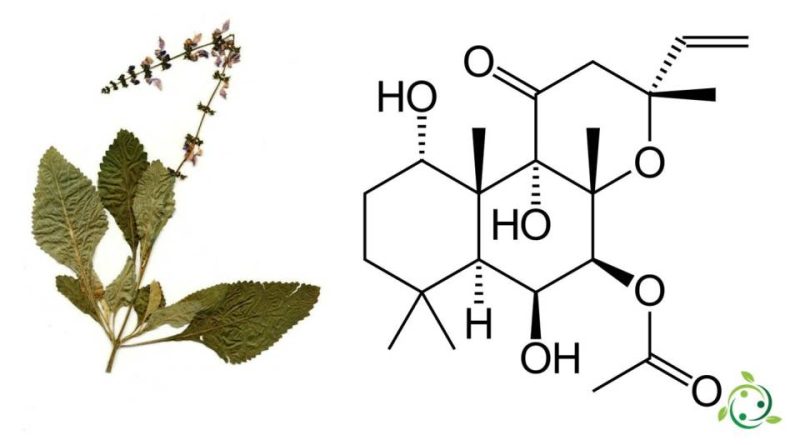Forskolin
Forskolin
Forskolin (or coleonol) according to the official IUPAC nomenclature is: (3R, 4aR, 5S, 6S, 6aS, 10S, 10aR, 10bS) -3-Ethenyl-6,10,10b-trihydroxy-3,4a, 7,7 , 10a-pentamethyl-1-oxododecahydro-1H-naphtho [2,1-b] pyran-5-yl acetate.
Forskolin has a brute or molecular formula: C22H34O7 and is a labdanum diterpene produced by the Indian plant Coleus (Coleus barbatus (Andrews) Benth. Ex G.Don).
As with other diterpenes, forskolin is derived from Geranylgeranyl pyrophosphate (GGPP). Forskolin contains some unique functional elements, including the presence of a heterocyclic ring derived from tetrahydropyran.
Forskolin is a substance used in laboratory research to increase cyclic AMP levels by stimulating adenylate cyclase.
Forskolin activates the enzyme adenylcyclase and increases the intracellular levels of cAMP. CAMP is an important messenger necessary for the correct biological response of cells to hormones and other extracellular signals. It is required for cellular communication in the hypothalamus / pituitary axis and for hormone feedback control by inducing transcription of the corticotropin releasing factor gene.
Scientific research is currently aimed at verifying its effectiveness as a slimming agent and its effects on testosterone.
However, the data are currently insufficient to be able to reach definitive conclusions and the exact dosages to be taken in order to achieve the desired effects are not well known.
Forskolin is widely used as a supplement.
Warning: The information shown is not medical advice and may not be accurate. The contents are for illustrative purposes only and do not replace medical advice.

